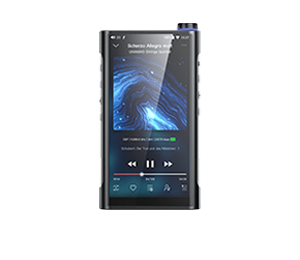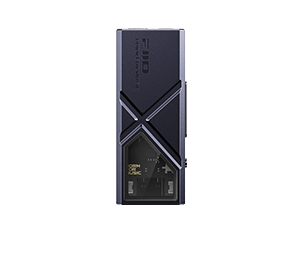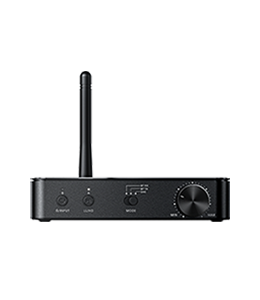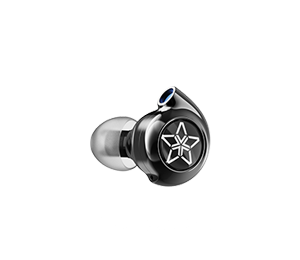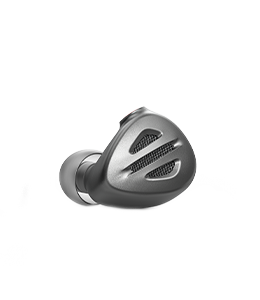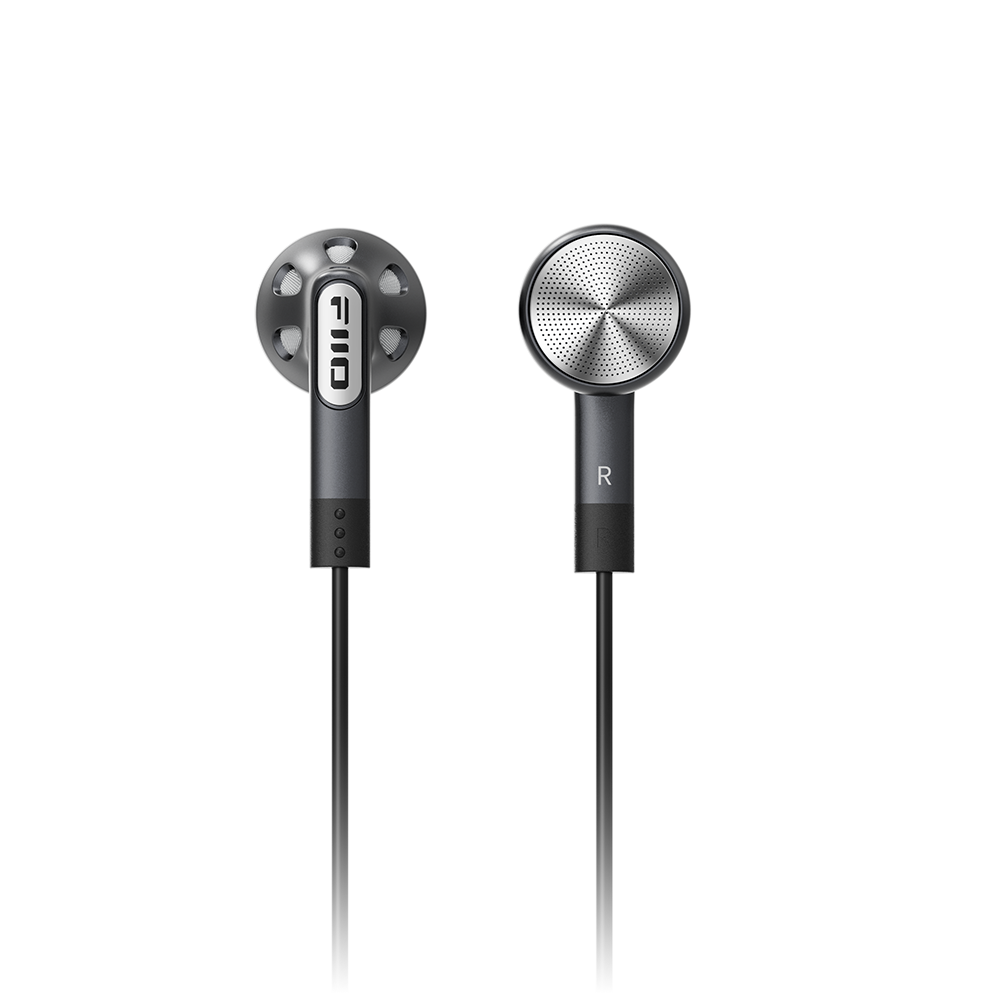Fiio F9 In Ear Headphones Review
Author: Tech Merit Reviews
Review from: samma3a
→→ Read the original article on samma3a: >> Click here
FiiO F9 Pros&Cons
Pros
Price-point
Comfort
Almost great sound
Value
Cons
Treble peak
FiiO F9 Specs
Impedance: 28Ω
Driver configuration: Triple hybrid (9.2mm Dynamic driver + 2 Balanced Armature drivers)
Frequency response: 15 Hz ~ 40 kHz
Sensitivity: 106 dB/mW
Cable length: 120cm
Weight: 21g
Packaging
As we’ve come to expect and appreciate, Fiio packages the FiiO F9 in a very familiar packaging style (similar to that of the F5 and EX1 2nd Gen). A mostly black coloured box proudly displays an image of both colour variants on the front, along with the familiar Hi-Res Audio logo.
The sides are mostly blank, whereas the rear lists a few specifications, as well as the package contents.
What’s in the box?
FiiO F9
HB1 Waterproof storage case
6 x Pair of silicon eartips
1 x 3.5mm single ended MMCX cable
1 x 2.5mm Balanced MMCX cabl
Accessories
Whilst the FFiiO F99 doesn’t include a TON of accessories, what Fiio did include is perfectly acceptable. The 6 pairs of silicone eartips consists of 2 different types of silicone eartips, and in varying sizes. The red eartips have a smaller bore, which elevates bass frequencies a bit whilst lowering the high frequencies slightly, whereas the smoke coloured tips have a considerably wider bore.

The HB1 case is becoming a bit of a norm for Fiio’s IEM range, it would seem, as we’ve seen this case included with the F5 as well.
The 2 included cables are of very different design and function. The 3.5mm single ended MMCX cable is of fairly average design, and includes an inline control. The 2.5mm Balanced MMCX cable, on the other hand, features no controls (as with all balanced cables) and sports a more premium braided design.
Read: Fiio EX1 2nd Gen In Ear Headphones Review
Design
In the past, Fiio’s IEMs were largely re-branded version of existing IEMs manufactured by Dunu. FiiO F9, however, seems to be Fiio’s first somewhat independent design.
Now, we say somewhat independent as it seems almost impossible to come up with a totally original design, seeing as the ear’s geometry does limit design, a long with the fact that there are thousands of designs out there already. So it’s only natural for some design elements to cross over between products. The F9, for example, seems somewhat reminiscent to that of some NuForce IEMs. The F9 clearly isn’t a copy, but the similarities are hard to deny.
Despite that, Fiio’s wave / ripple design does look great. It’s not entirely subtle, but absolutely not an “in your face” design element either.

It does seem as thought Fiio spent a decent amount of time in R&D, as the F9’s shell is easily one of the most comfortable available. The shells also have 2 ventilation holes each, which does affect the FiiO F9’s isolation. Now, it’s nowhere near as “open” sounding as a set of earbuds, but does not offer much more isolation than the F5. This does of course add some character to the soundstage. As such, if high levels of isolation are required, the F9 won’t be suitable.
For the most part, Fiio seem to have done a fantastic job in terms of QC (quality control). The only minor issue we had initially was that the MMCX connections were incredibly tight. In fact, one of the shells required the use of a small flat-head screwdriver in order to dislodge the cable. But, after some use, it has become easier to remove the cable, but it’s still a very secure connection. This is in contrast with the relatively insecure MMCX connection of the F5.
The cables are also well-constructed, and the pre-formed earhooks are soft enough to conform to practically everyone’s ears, yet rigid enough to keep the F9 securely and comfortably in place.
Fiio also designed the F9 to have nozzles which have a “barb”. This barb is used to keep the eartips securely in place, and is especially useful for eartips such as the JVC Spiral Dots which are actually designed to work best with a barbed nozzle.
Fiio have also announced another version of the F9, named the F9 SE (Standard Edition). The SE will do away with the removable cable and inline controls, but will feature a braided design like the balanced cable of the F9, as well as a right-angled 3.5mm single ended plug. There will also be a reduction in price from $100 to $89. So, if you don’t need the removable cable feature, this would be the best version to go for in terms of value.

Sound
Fiio’s recent DAP offerings have been somewhat disappointing, to say the least. Their IEMs, on the other hand, have been pretty good, but nothing overly great.
The F9, however, is a whole new beast; a new hope.
Fiio managed to give the F9 an exceptionally well-balanced and coherent signature. Well, almost.
To be perfectly honest, the only major flaw the FiiO F9 exhibits is a sharp treble peak around the 7kHz point. This can make the F9 seem a bit bright and piercing with certain tracks.
The severity of this peak is also going to depend on the eartips used. The included smoke eartips have a larger bore, which makes the 7kHz peak more apparent. The red eartips, on the other hand, have a smaller diameter bore, which tends to give a bit more bass presence, along with taming the highs a bit. My absolute favourite tips to use are the JVC Spiral Dots. I find myself using these for most IEMs for their sonic properties and high levels of comfort. In the case of the F9, the Spiral Dots also give a little more isolation than the stock eartips. But, despite how good the Spiral Dots are, they don’t get rid of the 7kHz peak.
However, there is a little trick you can do to make the F9 truly exceptional. Brooko on Head-Fi suggested that you use the EQ of your favourite player to lower the closest slider to 7kHz by around 4-6dB. On many devices the closest would be the 8kHz slider.
And we have to confirm, lowering this does get rid of the treble peak, transforming the F9 into something else. It’s actually quite a revelation when you switch between the EQ’d profile and standard profile. That really highlights the effect of that 7kHz spike.
For the vast majority of cases, IEMs usually colour the sound. By that it is meant that they do not accurately portray the original signal, and so would add a little “warmth”, or can sound a little “cold”. As such, you’d often find that most IEMs (and headphones too), may work really well for certain genres of music, but not so well with others.
Getting rid of the 7kHz peak transforms the F9 into what seems to be as close to a reference monitor as you could possibly get at this price-point right now. Reference level IEMs are incredibly pricey – $1450 in the case of the InEar ProPhile 8. Of course, we are not suggesting that the F9 is a suitable replacement or alternative for the PP8; but good grief it is good nonetheless. Taking into account Fiio’s other devices, the F9 seems like it was created by an entirely different company.
Of course, many people might be looking to upgrade from the F5 to the F9. We can confidently say that, if you like the tonality of the F5, you’ll likely love the F9. Switching between the 2 highlights the F5’s slightly more forward but thin vocals, whereas the F9 simply has a more full and balanced signature. Accuracy and balance is the key here, and once the treble spike has been EQ’d out, the F9 doesn’t seem to add much (if any) coloration to the music. But without resorting to an EQ the F9 is a bright-sounding IEM.
Fiio have also announced another upcoming iteration of the F9 – the F9 Pro. This has intrigued us tremendously, as it would be interesting to see what Fiio can do to improve upon the existing F9. We assume that they will get rid of the 7kHz peak; but what else?
It seems that pricing for the F9 Pro will increase to $150, which will put it in direct competition with the MEE Audio M7 Pro. But to be perfectly honest with you – as far as outright sonic quality is concerned – the regular F9 already sounds more refined than the M7 Pro. Who knows, perhaps in terms of sonic performance it would be a strong contender against even the mighty DK-3001. And to pique interest even more, there has been mention of an F9 Limited Edition too.
Read: Fiio F5 In-Ear Headphones Review
 Value
Value
Taking into consideration the FiiO F9’s build quality, great overall QC, and exceptionally surprising refined sound signature, judging FiiO F9’s value is an incredibly easy task. Thus far we have not heard anything at the $100 point which sounds this damn good. As good as the Kinera H3 is, FiiO F9 just takes refinement to a new level, in terms of both build quality and sound.
However, apparently Kinera are working on a lower-priced IEM which supposedly surpasses the performance of the FiiO F9. At the moment this seems pretty darn impossible to us. But if it is done, that would be incredible.
Anyways, as things are right now, the F9 can well and truly be considered as one of the most valuable IEMs
available right now.
Look, when has a product ever honestly lived up to the hype created about it? Rarely? Never? As much as we honestly hate getting involved in hype, we feel that the F9 is well-deserving of at least a little bit of hype. As mentioned, the Standard Edition would be a better option if you don’t need/want a removable cable design or the option to go for a balanced setup. But perhaps it would be best to wait a little bit and see what Fiio manages to do with the F9 Pro. Irrespective, the regular F9 would still be great as a backup set. Don’t be surprised if you often see the F9 being out of stock though.
Overall it’s very difficult not to give the FiiO F9 a 10/10, score. But, alas, we must remain objective about these things. Is the F9 perfect? Absolutely not. But at this price, oh boy it sure does a lot of things right. So much so that we’re perfectly happy to almost forgive it entirely for its shortcomings (or excess, as it were).
Rating
The TECH MERIT rating system is designed to take as many aspects of the device into account as possible. As such, we have a basic rating, as well as a final rating. The basic rating rates the product purely as a high quality portable audio device, and is generally a good indicator of how it stacks up to its rivals in terms of standard features and specs. The final rating, however, grants bonus points for any extra features and specs that aren’t quite as common, and is a great way to judge the product as a complete package.
Packaging
Look and feel: 8 / 10
Included Accessories
More than 3 pairs of eartips included: YES
Protective case: YES
Build
Quality control: 9 / 10
Seems durable: YES
Microphonics: 9 / 10
Comfort: 10 / 10
Sound
Relatively balanced signature: YES
Soundstage: 8 / 10
Detail retrieval: 9 / 10
Sibilance: 8 / 10
Instrument separation: 9 / 10
Isolation: 7 / 10
Hiss: 8 / 10
Portability
Small size: 9 / 10
Relatively low power required: 8 / 10
Weight: 10 / 10
Value
Competitive price-point: YES
Relative value: 10 / 10
Basic Rating: 8.8
Bonus points
Removable cables: YES
Number of cables included: 2
Premium cables: YES
Pairs of eartips above 3 pairs: 3
How premium the case looks and feels: 8 / 10
Battery life above 8 hours: –
Bluetooth: –
Apt-X: –
Volume/remote controls: YES
Metal body: YES
Interchangeable filter system: –
Premium look and feel: YES
Use of exotic materials: –
Bluetooth connection quality: –
1/4” adapter included: –
Cable management: YES
Aircraft adapter: –
Final Rating: 9.3
The Competition:





